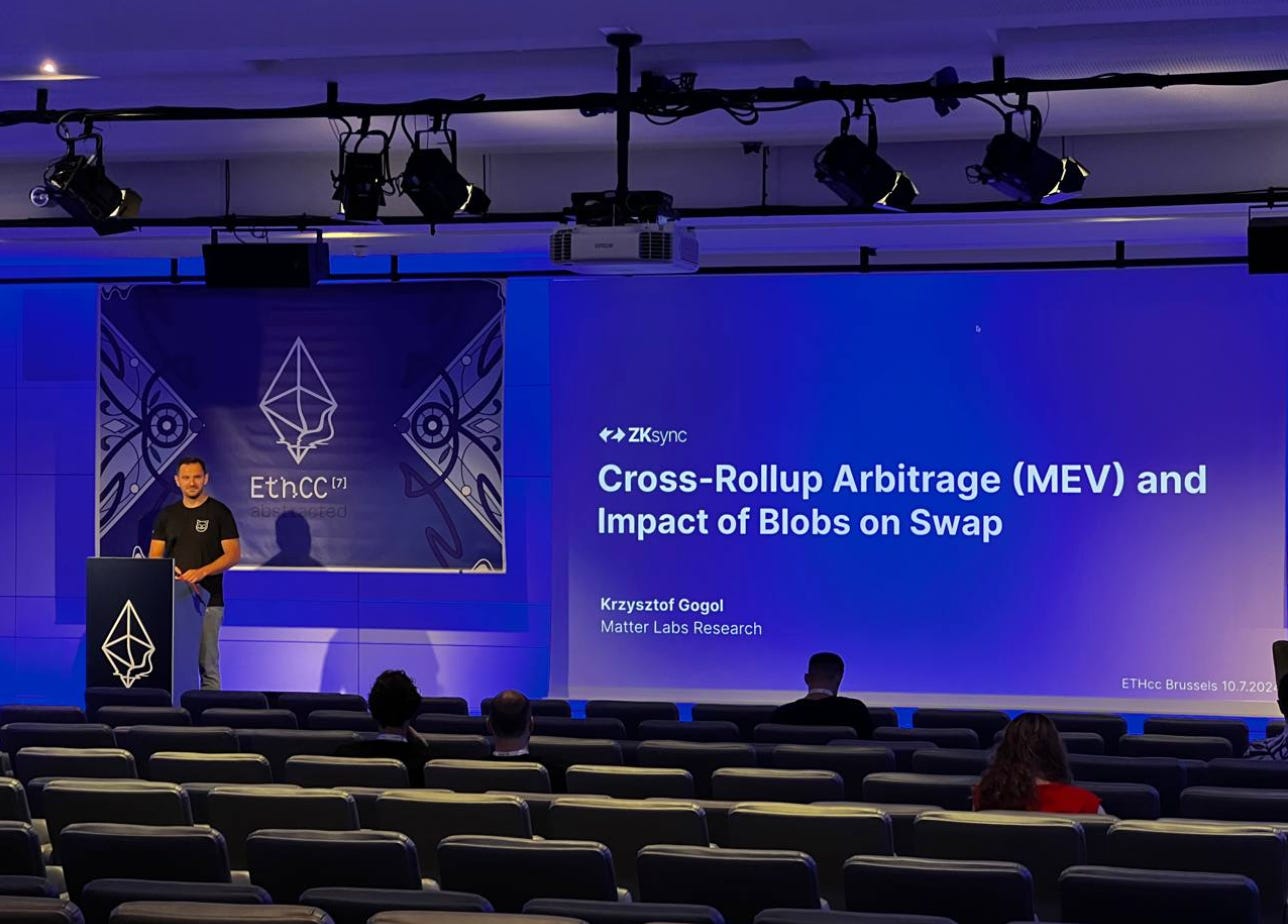ETHcc 2024: Three Key Trends Shaping the Future of Blockchain and Digital Assets
ZKsummer, intents and solvers (AI in DeFi) and infrastructre innovation dominated this year Europe largest blockchain conference - ETHcc.
ETHcc, Europe's largest annual blockchain conference, welcomed 7,000 attendees and 400 speakers this year. Held in Brussels in July, the event will move to Cannes next year. With over 700 side events, ETHcc showcases the strength of the Ethereum community and the industry's evolution. The conference focused on several key areas, providing insights into the future of blockchain and digital assets:
ZKsummer:
Rollups (Layer-2 chains) for Application Chains
Shared Sequencing for better liquidity utilization and cross-rollup consolidation
Intents and Solvers
AI in DeFi for smarter market-making and faster, cheaper, and more secure trade execution
Infrastructure
Security (from DVT) and Profitability (from restaking)
1. ZKsummer and Rollups
Rollups - layer-2 blockchains - are on the rise: they offer 100x lower gas fees than Ethereum, 5x faster block production, with the same level of security. Vitalik Buterin has endorsed rollup-centric roadmap of Ethereum, which is transitioning to a settlement layer. Trading and user activities are moving to public rollups like Arbitrum, Base, Optimism, or zkSync. The permissioned and private rollups are getting traction as well, with all major public rollup opening their tech stack for easy rollup creation.
1.1 Rollups for Application Chains
Zero-knowledge technology and rollups are revolutionizing blockchain. They enable the creation of permissioned blockchains tailored to specific applications and use cases, simplifying the process of having one's own L1 blockchain. Previously, setting up a blockchain required significant infrastructure investments, but now, with Layer 2 (L2) solutions and zero-knowledge (ZK) technology, the process is much more accessible.
L2 blockchains eliminate the need for consensus mechanisms and validator infrastructure. Encrypted transactions are stored on the Ethereum blockchain, and in the future, they could also be stored on other blockchains like Bitcoin, Hyperledger, or Unified Ledger. Most of these L2s are compatible with Ethereum Virtual Machine (EVM), meaning they can support DeFi smart contracts developed initially on Ethereum
When to Use Your Own L2:
For a permissioned ecosystem
To keep transactions private
For security reasons, such as maintaining an order book for lending or perps platforms
For gasless operations, like an NFT marketplaces
When to Use Public Roll-ups:
When there is no need to restrict access to your product
When you need to integrate with other dApps or access liquidity from public chains
1.2 Shared Sequencing
Layer 2 blockchains currently rely on centralized sequencers as their main infrastructure component. In the future, these will become decentralized. Shared sequencing involves a shared infrastructure that supports the operations of multiple Layer 2 blockchains.
Why Shared Sequencing Matters:
It enables smoother cross-blockchain operations and resource sharing.
It addresses issues like fragmented capital and tokenized Real-World Assets (RWA) across different blockchains and protocols.
2. AI in DeFi: Solvers and Intents
AI is making significant inroads into blockchain and DeFi, driving new types of applications. DeFi solvers and DEX aggregators are evolving to provide more than just the best price execution across chains. They integrate bridges, consider the location of servers for optimal execution, and use AI to optimize trade routes. Some even engage in market making and manage their own order books.
3. Infrastructure: Liquid Staking and Restaking
Blockchain infrastructure, especially for Ethereum, is inherently permissionless. This raises two concerns:
Ensuring no one cheats
Avoiding cooperation with blacklisted entities for the compliance reasons
The first challenge in proof-of-stake chains is solved by staking - posting collateral to ensure that no one cheats and earning rewards for maintaining the network. The traditional staking can be boosted in one of the two ways:
Liquid Staking: Users receive tradeable tokens that confirm that their tokens were provided to validators. These tradeable tokens - liquid staking tokens - accumulate staking rewards and can be furhter used in DeFi.
Restaking: Users provide their already stake tokens for additional applications requiring collateral to prevent cheating, such as bridges.
DVT - Distributed validator Technology - is a cryptographic method that increases the security of staking, liquid staking, and re-staking.
In order to avoid collaboration with any blacklisted validators, a private network of validators can be used. These private validation sets comply with regulations and hide the details of your transaction before execution, increasing its security (from MEV attacks). The number of privately settled transactions is increasing, driven by security and speed considerations rather than regulatory compliance alone. These additional services come at a higher cost.
Conclusion
ETHcc 2024 highlighted the rapid advancements in blockchain technology and its diverse applications. Running your blockchain/rollup never was easier. The conference provided valuable insights into the future of the industry, from zero-knowledge roll-ups to AI in DeFi, and emphasized the importance of robust infrastructure development. As the blockchain ecosystem continues to evolve, events like ETHcc play a crucial role in shaping its trajectory.




